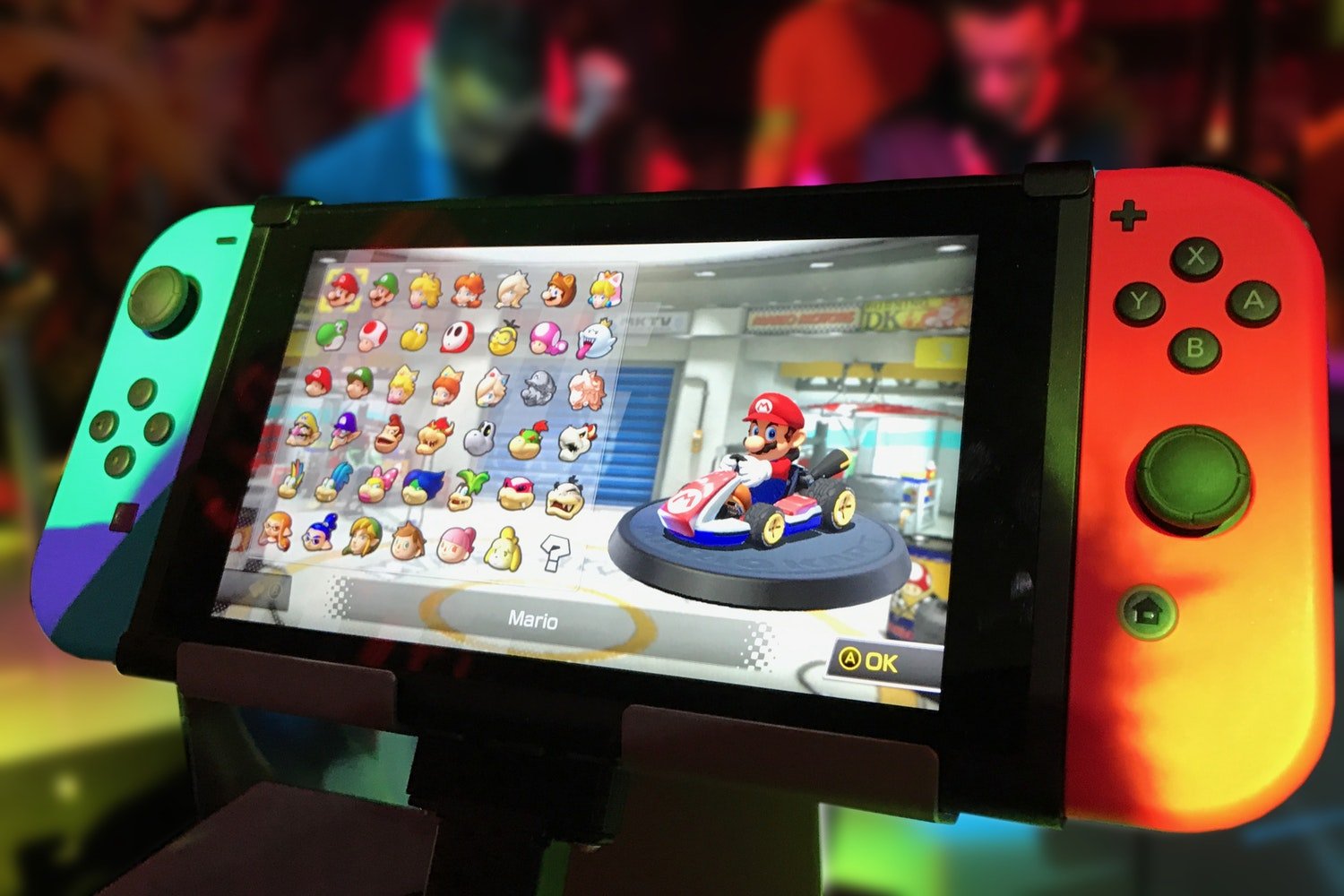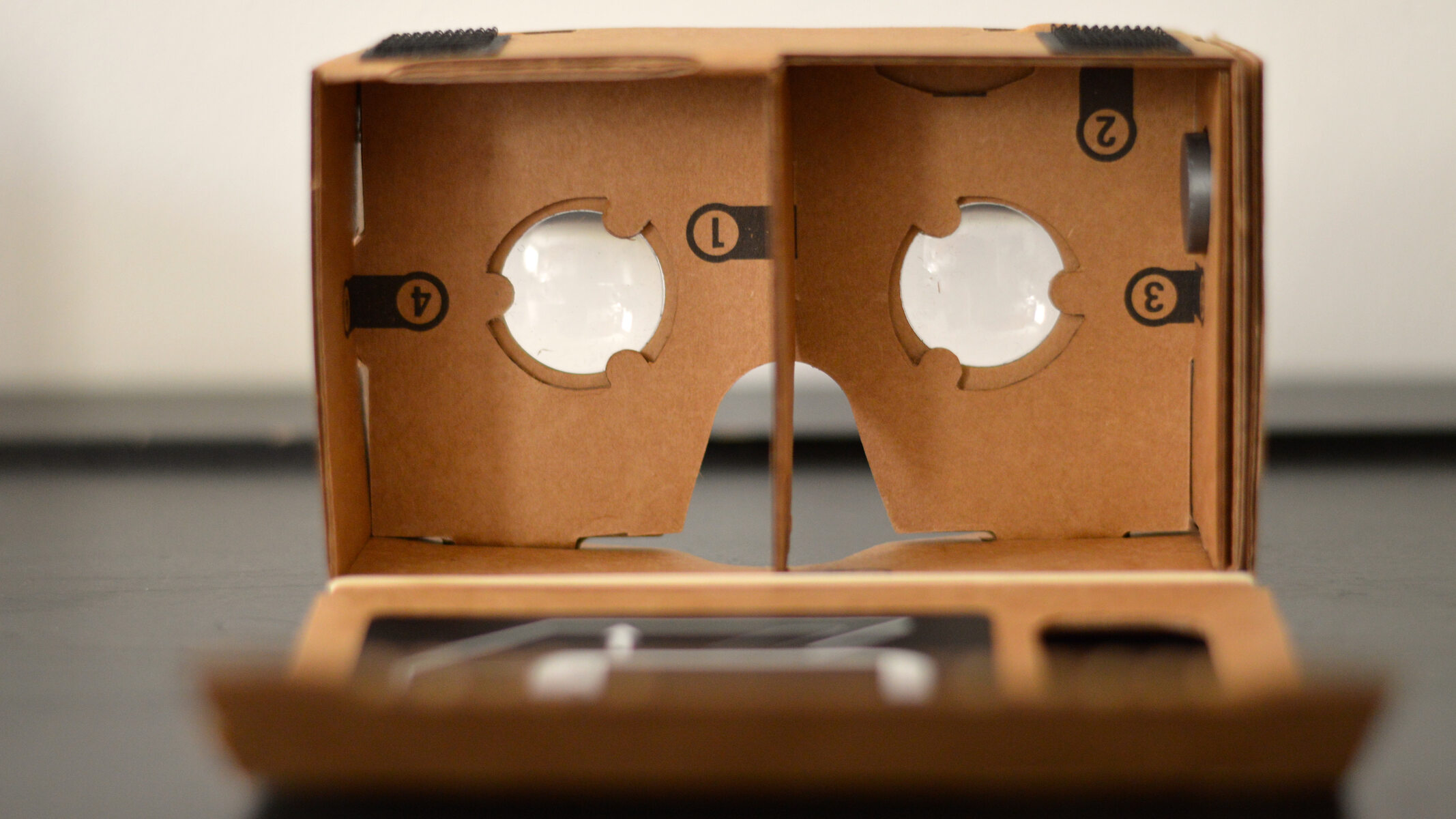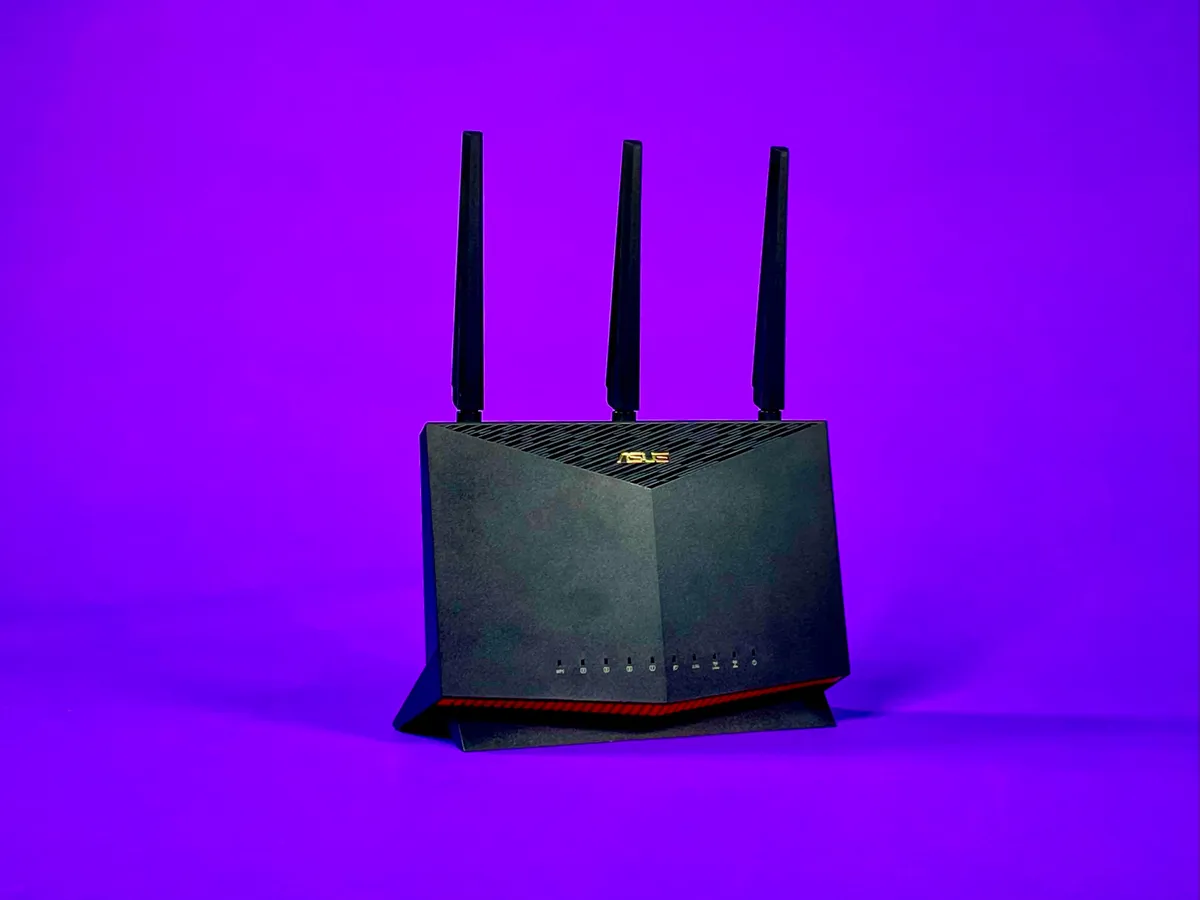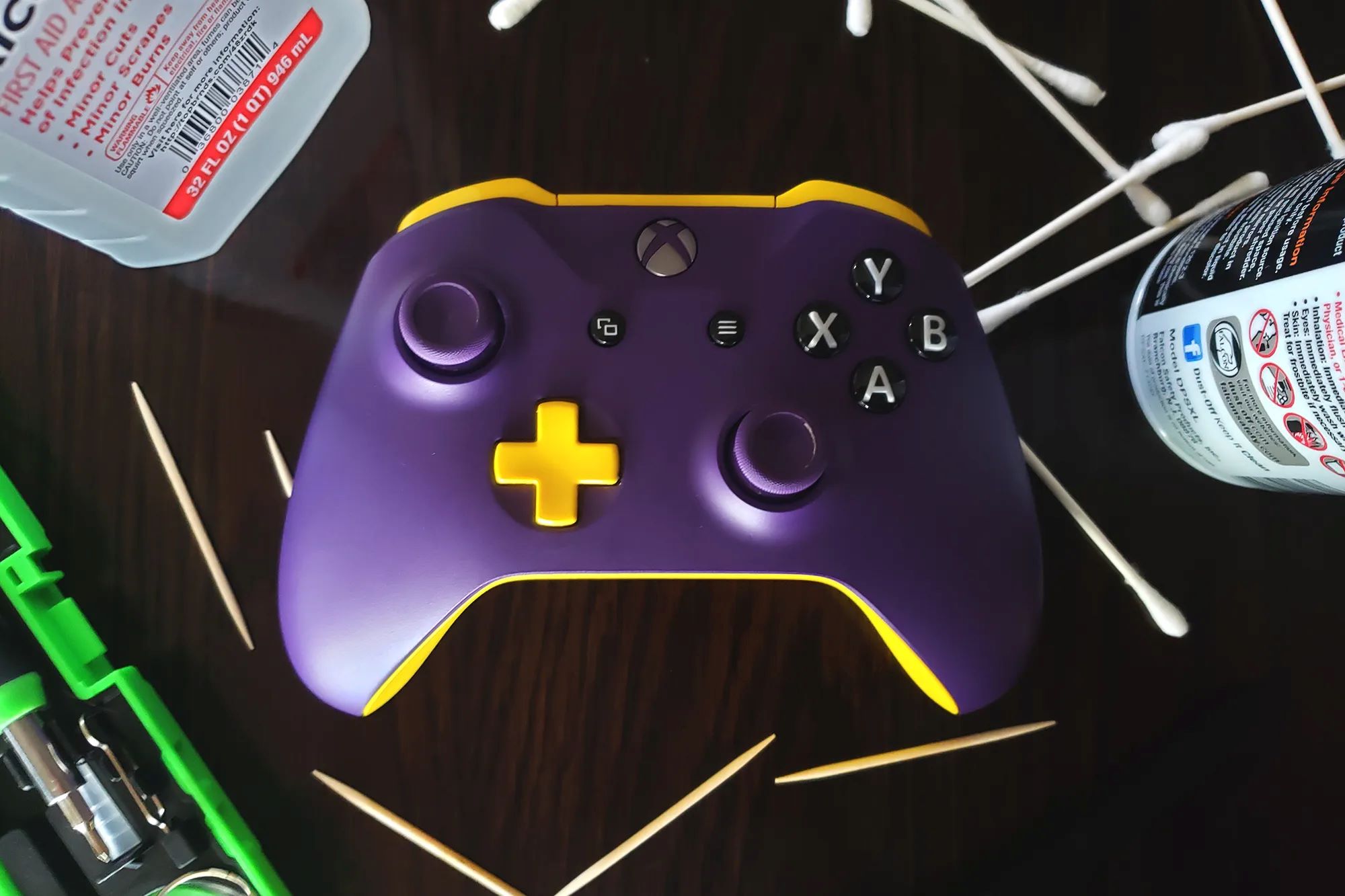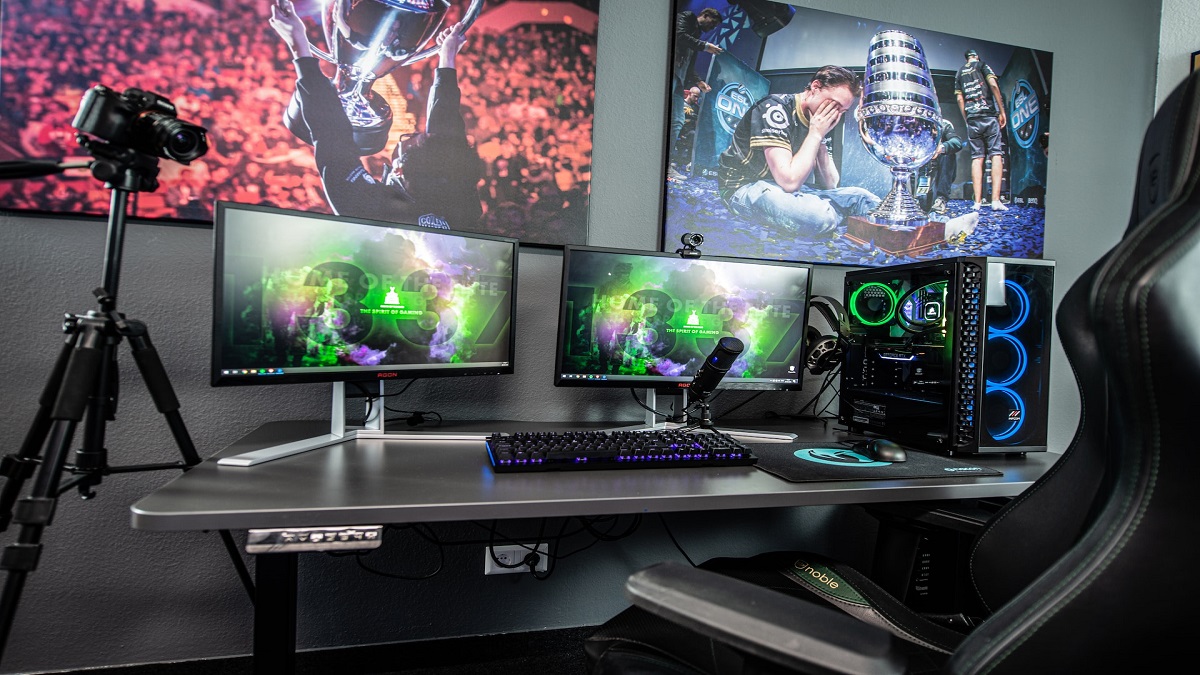Introduction
Online gaming has become increasingly popular, offering an immersive experience that allows players to connect and compete with individuals from around the world. However, one frustrating issue that gamers often encounter is rubber banding. If you’ve ever experienced your character suddenly glitching or getting pulled back in the game, you’ve likely encountered this phenomenon. Rubber banding refers to a situation where the player’s character or actions are inconsistent or delayed, making the game feel erratic and unresponsive.
Rubber banding can have a significant impact on the overall gaming experience. It can diminish your ability to perform well in competitive matches, ruin cooperative gameplay, or even force you to abandon a game altogether. Luckily, there are several steps you can take to fix rubber banding and improve your online gaming experience.
In this article, we will explore the causes of rubber banding in online gaming and discuss various strategies to resolve it. From optimizing your network settings to prioritizing game traffic, we will cover numerous techniques that can help eliminate or reduce rubber banding. By following these steps, you can enjoy a smoother and more enjoyable gaming experience with minimal disruptions.
Before we dive into the solutions, it’s important to note that rubber banding can occur due to multiple factors, including your internet connection, network settings, or even issues with the game servers. Therefore, it may require a combination of approaches to address the problem effectively. Let’s explore the possible causes of rubber banding and the steps you can take to fix it.
What is Rubber Banding in Online Gaming?
Rubber banding in online gaming refers to a phenomenon where a player’s character or actions seem to lag behind or snap back to a previous position. It is like being held by an elastic band that pulls you back, hence the term “rubber banding.” This can be incredibly frustrating, as it interrupts the smooth flow of gameplay and can impact your overall performance.
Rubber banding typically occurs when there is a delay or inconsistency in the network communication between your gaming device and the game server. This delay can result from issues such as a slow internet connection, high network latency, or network congestion. When these factors come into play, it can cause your character’s movements, actions, or interactions with other players to become erratic and unpredictable.
There are several ways rubber banding can manifest in online gaming. One common type is character stuttering, where your character repeatedly moves forward and backward in short intervals, making it difficult to control or navigate the game world smoothly. Another form is teleportation, where your character suddenly appears in a different location, often backtracking to a previous position. Both instances can severely disrupt gameplay, especially in fast-paced and competitive games.
Rubber banding can occur in a variety of online gaming genres, including first-person shooters, multiplayer online battle arenas (MOBAs), and massively multiplayer online role-playing games (MMORPGs). While it can happen sporadically, it is especially prevalent during peak gaming times when internet traffic is high.
It is important to differentiate rubber banding from typical lag or latency issues. Lag usually involves delayed responses between your input and the game’s reaction, while rubber banding specifically refers to the jerky, inconsistent movements of your character within the game world. Understanding the distinction can help in troubleshooting the issue correctly and implementing the appropriate solutions.
Now that we have covered what rubber banding is and how it impacts online gaming, let’s explore the potential causes of this issue and learn how to fix it effectively.
Causes of Rubber Banding
Rubber banding can be caused by a variety of factors, both related to your own network setup and external factors such as game server issues. It is important to identify the root cause of the problem to effectively address it. Here are some common causes of rubber banding in online gaming:
1. Slow Internet Connection:
One of the primary culprits of rubber banding is a slow internet connection. If your connection speed is inadequate, the data packets required for smooth gameplay may not reach the game server and back to your device in a timely manner, leading to rubber banding. Upgrading your internet plan to a higher speed or utilizing a wired connection can help alleviate this issue.
2. Network Latency:
Network latency, or the delay in data transmission between your device and the game server, can also contribute to rubber banding. High latency can cause your actions to be delayed, resulting in the erratic movements of your character. This can be caused by factors such as long distances between your location and the game server, network congestion, or suboptimal network routing. Optimizing your network settings and prioritizing game traffic can help reduce latency and minimize rubber banding.
3. Packet Loss:
Packet loss occurs when data packets sent from your device to the game server or vice versa are not received. This can lead to disruptions in gameplay, including rubber banding. Packet loss can result from network congestion, faulty network hardware, or interference. By checking for packet loss and addressing any underlying issues, you can improve the stability of your network connection and reduce rubber banding.
4. Game Server Issues:
Sometimes, rubber banding can be attributed to problems on the game server side. This could range from overloaded servers, server lag, or server synchronization issues. Unfortunately, as a player, there is little you can do to directly address server-related rubber banding issues. However, you can try connecting to different game servers or reaching out to the game’s support team to report the problem.
5. Hardware or Software Limitations:
In some cases, rubber banding can be caused by hardware or software limitations on your gaming device. Outdated or incompatible drivers, firmware, or operating systems can result in performance issues that manifest as rubber banding. Updating your drivers, firmware, and software to the latest versions can help resolve these issues.
Identifying the specific cause of rubber banding in your online gaming experience is crucial in implementing the appropriate solutions. In the following sections, we will delve into various strategies and techniques that can help fix rubber banding and enhance your gaming experience.
Assess Your Internet Connection
Before diving into more advanced troubleshooting steps, it’s essential to assess your internet connection to ensure it is capable of providing a stable and reliable gaming experience. Here are some key factors to consider when evaluating your internet connection:
1. Check Your Internet Speed:
Start by running an internet speed test to determine the upload and download speeds provided by your internet service provider (ISP). A slow internet connection can lead to rubber banding and other connectivity issues. Ideally, for online gaming, a download speed of at least 10 Mbps and an upload speed of 1 Mbps or higher is recommended. If your current speeds are significantly lower than these guidelines, you might want to consider upgrading your internet plan to a faster package.
2. Look for Consistent Connectivity:
A stable and consistent internet connection is crucial for smooth online gaming. Use a ping test to measure the latency or delay in your network connection. Consistent latency without sudden increases or spikes is ideal. Higher latency can result in rubber banding and other gameplay disruptions. If you notice high latency or inconsistent connectivity, it may be necessary to investigate further to identify the underlying cause.
3. Consider Data Usage and Bandwidth:
Bandwidth is the amount of data that can be transmitted over your internet connection at any given time. If there are multiple devices or users simultaneously utilizing the internet connection in your household, it can impact the available bandwidth for online gaming. Other bandwidth-intensive activities such as streaming or large file downloads can also affect your gaming experience. Consider minimizing data usage on other devices and activities during your gaming sessions to reduce network congestion and potential rubber banding.
4. Test Different Connection Types:
If possible, experiment with different connection types to identify whether a particular type of connection offers better gaming performance. For example, switching from a Wi-Fi connection to a wired Ethernet connection can often provide a more stable and reliable network connection. Wired connections typically offer lower latency and reduced chances of interference, resulting in a smoother online gaming experience.
By thoroughly assessing your internet connection, including speed, stability, bandwidth usage, and connection type, you can identify any potential shortcomings that may be contributing to rubber banding in your online games. Addressing these issues can significantly improve your gaming experience and reduce the occurrence of rubber banding. In the next section, we will explore various techniques to optimize your network settings for online gaming.
Optimize Your Network Settings
To minimize rubber banding and ensure smooth online gaming, it’s important to optimize your network settings. By making a few adjustments, you can improve the overall performance of your network connection. Here are some strategies to optimize your network settings for online gaming:
1. Enable Quality of Service (QoS):
Quality of Service (QoS) is a feature available on many routers that allows you to prioritize certain types of network traffic over others. By prioritizing game traffic, you can ensure that your gaming data packets are given priority over other non-essential traffic, reducing the likelihood of rubber banding. Consult your router’s manual or access its settings to enable QoS and set the priority for your gaming applications or devices.
2. Use a Wired Connection:
A wired Ethernet connection provides a more stable and reliable network connection compared to Wi-Fi. Wi-Fi signals can be susceptible to interference and signal degradation, leading to increased latency and potential rubber banding. If possible, connect your gaming device directly to your router or modem using an Ethernet cable. This direct connection can help reduce latency and provide a more consistent network connection for online gaming.
3. Adjust Router Placement:
The placement of your Wi-Fi router can impact the signal strength and stability. Ensure that your router is placed in a central location within your home, away from walls, furniture, or other objects that could obstruct the signal. Also, consider elevating the router to a higher position to reduce interference from other devices and improve coverage.
4. Update Router Firmware:
Router manufacturers often release firmware updates that can enhance the performance and stability of your device. Check if there are any available firmware updates for your router and apply them. These updates may include bug fixes, security patches, and performance improvements, which can help minimize rubber banding and improve overall network performance.
5. Avoid Background Downloads or Streaming:
Large downloads, streaming content, or other bandwidth-intensive activities running in the background can consume a significant portion of your network resources. These activities can create network congestion and lead to increased latency, resulting in potential rubber banding. To optimize your network connection for gaming, consider pausing or scheduling downloads and streaming sessions during your gaming sessions.
Optimizing your network settings can significantly improve your online gaming experience by reducing rubber banding and increasing network stability. However, if rubber banding persists, it may be necessary to investigate other factors, such as packet loss or game server issues. We will explore these additional troubleshooting steps in the following sections.
Check for Packet Loss
Packet loss is a common issue that can contribute to rubber banding and other connectivity problems in online gaming. When data packets fail to reach their destination, it can result in disruptions and delays in gameplay. To identify and address packet loss, follow these steps:
1. Ping Test:
Perform a ping test to measure the packet loss between your gaming device and the game server. Open the command prompt or terminal on your computer and type “ping -n 100 [game server IP or domain]” (replace [game server IP or domain] with the actual IP address or domain of the game server). This command will send a series of test packets to the server and display the results, including the packet loss percentage. If the packet loss percentage is consistently high (more than 1-2%), it indicates a problem with your network connection or the game server’s connection.
2. Check Network Hardware:
Inspect your network hardware, including your modem, router, and Ethernet cables. Loose connections, damaged cables, or faulty hardware can cause packet loss. Ensure that all connections are secure and tightly plugged in. If you suspect an issue with your Ethernet cable, try using a different cable or test your device’s connection with Wi-Fi to determine if the issue persists. Additionally, consider updating or restarting your network hardware to resolve any temporary issues.
3. Reduce Interference:
Interference from other electronic devices can disrupt network signals and contribute to packet loss. Keep your gaming device and network hardware away from devices that emit electromagnetic interference, such as cordless phones, baby monitors, or microwave ovens. Additionally, ensure your Wi-Fi router is set to a clear wireless channel with minimal interference from neighboring networks.
4. Contact Your Internet Service Provider (ISP):
If you consistently experience packet loss and have ruled out issues with your network hardware, contact your ISP to report the problem. They can perform diagnostic tests on their end or address any potential issues with your internet connection. They may suggest steps such as checking signal levels, replacing hardware, or troubleshooting the network configuration.
Resolving packet loss is crucial for improving network stability and reducing rubber banding in online gaming. By performing ping tests, checking network hardware, reducing interference, and reaching out to your ISP, you can address packet loss effectively. If packet loss continues to persist despite these efforts, further troubleshooting steps may be required.
Prioritize Game Traffic
To ensure a smooth online gaming experience and minimize rubber banding, it is important to prioritize game traffic on your network. By giving priority to gaming data packets, you can reduce latency and improve the overall performance of your gaming connection. Here are some methods to prioritize game traffic:
1. Quality of Service (QoS) Settings:
Most modern routers feature Quality of Service (QoS) settings, allowing you to prioritize specific types of network traffic. Access your router’s settings page and look for the QoS section. Enable QoS and set the priority of gaming applications or devices to a higher level. This ensures that gaming data packets receive higher priority over other network traffic, reducing the likelihood of rubber banding caused by congestion.
2. Port Forwarding:
Port forwarding allows you to direct incoming game data packets directly to your gaming device, bypassing unnecessary network routing. Consult the game’s documentation or online resources to identify the required ports for the game. Access your router’s settings and configure port forwarding for those specific ports to enhance the delivery of gaming data packets. This can help reduce latency and improve the responsiveness of your online gaming experience.
3. Use Traffic Shaping Tools:
Traffic shaping tools help control the flow of network traffic by allocating bandwidth to different applications or devices. Look for traffic shaping or bandwidth control features in your router settings. Allocate a larger portion of your bandwidth to gaming applications or devices to ensure they receive preferential treatment. This can help prioritize game traffic and minimize rubber banding caused by network congestion.
4. Close Background Applications:
Applications running in the background can consume valuable network resources, potentially leading to rubber banding in online games. Close any unnecessary applications, especially those that utilize internet connection or bandwidth, to free up resources for your gaming session. This can help reduce network congestion and ensure that game traffic receives maximum priority.
5. Use a Quality Router:
Investing in a high-quality router that supports advanced QoS features can significantly improve your gaming experience. Advanced routers often offer better traffic management capabilities, allowing you to prioritize game traffic effectively. Consider upgrading to a router that offers the necessary features and capabilities to optimize your network for online gaming.
By prioritizing game traffic on your network, you can significantly enhance the performance and stability of your online gaming experience. Whether through QoS settings, port forwarding, traffic shaping tools, or closing unnecessary background applications, prioritizing game traffic ensures that your gaming data packets have the highest priority, reducing latency and minimizing rubber banding. In the next section, we will explore other strategies to improve your network connection and eliminate rubber banding in online gaming.
Upgrade Your Internet Plan
If you’re experiencing frequent rubber banding and other connection issues during online gaming, it may be time to consider upgrading your internet plan. Upgrading your plan can provide you with a faster and more stable internet connection, resulting in a better gaming experience overall. Here are some reasons why upgrading your internet plan can help alleviate rubber banding:
1. Increased Download and Upload Speeds:
A higher-tier internet plan typically offers faster download and upload speeds. Faster download speeds ensure that game data is received quickly, reducing the potential for delays or rubber banding. Increased upload speeds facilitate smoother communication between your device and the game server, resulting in more responsive gameplay and reduced lag.
2. Reduced Network Congestion:
Lower-tier internet plans often have more users sharing the same network resources, leading to increased network congestion. This congestion can cause delays and interruptions in gaming, leading to rubber banding. Upgrading to a higher-tier plan can provide you with access to less congested network resources, improving the stability and reliability of your connection during online gaming sessions.
3. Enhanced Stability and Latency Reduction:
Higher-tier internet plans often come with additional features and technologies that improve stability and reduce latency. These plans may offer better equipment, such as modems and routers, which can handle higher bandwidth demands. Additionally, they may offer better routing options, resulting in lower latency and a smoother gaming experience with reduced rubber banding.
4. Improved Flexibility for Multiple Devices:
If you have multiple devices connected to your internet network, upgrading your plan can provide more bandwidth to accommodate the simultaneous demands of gaming, streaming, and other internet activities. This increased bandwidth allocation prevents network congestion and reduces the likelihood of rubber banding caused by competing devices on the network.
5. Consistent and Reliable Connection:
Upgrading to a higher-tier internet plan ensures that you receive a consistent and reliable connection, which is essential for online gaming. With a stable connection, you can enjoy smoother gameplay without interruptions or sudden rubber banding. This is especially important for competitive gaming, where the slightest delay or disruption can significantly impact your performance.
Before upgrading your internet plan, research and compare the available options from different service providers. Look for plans that offer faster speeds, higher bandwidth, and reliable customer support. Keep in mind the specific requirements of your online games and consider the number of devices connected to your network to choose the plan that best meets your needs.
Upgrading your internet plan can provide a significant improvement in your online gaming experience. The increased speeds, reduced network congestion, improved stability, and lower latency can help eliminate rubber banding and create a smoother, more enjoyable gaming experience overall.
Reduce Network Congestion
Reducing network congestion is crucial for minimizing rubber banding and creating a smoother online gaming experience. Network congestion occurs when there is excessive demand on the available bandwidth, leading to delays and packet loss. By implementing strategies to reduce network congestion, you can optimize your internet connection for gaming. Here are some effective methods to reduce network congestion:
1. Limit Background Internet Usage:
One of the main causes of network congestion is excessive usage of bandwidth by other devices or applications on your network. To reduce congestion, limit or prioritize your background internet usage. Pause or schedule large downloads, updates, or streaming activities during your gaming sessions. By minimizing the demand on your network, you can allocate more bandwidth to your gaming activities and reduce the likelihood of rubber banding.
2. Manage Connected Devices:
The more devices connected to your network, the more demand there is on the available bandwidth. Take inventory of the devices connected to your network and assess whether all of them need to be connected simultaneously. Disconnect unnecessary devices or limit their internet usage during your gaming sessions. This reduces congestion and ensures that your gaming device receives the necessary bandwidth to operate smoothly.
3. Prioritize Gaming Traffic:
Quality of Service (QoS) settings on your router can help prioritize gaming traffic over other types of network traffic. Enable QoS and adjust the settings to give priority to gaming applications or devices. This ensures that gaming data packets receive preferential treatment, reducing latency and the chances of rubber banding caused by congestion. Consult your router’s manual or online resources for guidance on how to configure QoS settings.
4. Use a Wired Connection:
Wi-Fi connections are more susceptible to interference and congestion than wired connections. Whenever possible, connect your gaming device directly to your router using an Ethernet cable. Wired connections are more reliable with lower latency, reducing the chances of rubber banding caused by congestion on the Wi-Fi network.
5. Upgrade Your Router:
Older or lower-quality routers may not be equipped to handle heavy network traffic demands. Consider upgrading your router to a model that offers features such as dual-band support, beamforming, or advanced traffic management. These features can help reduce congestion and improve the overall performance of your network during online gaming sessions.
By implementing these strategies to reduce network congestion, you can optimize your internet connection for online gaming. Reducing background internet usage, managing connected devices, prioritizing gaming traffic, using a wired connection, and upgrading your router are all effective ways to minimize congestion and eliminate rubber banding caused by excessive network demand. In the next section, we will explore the benefits of using a wired connection for online gaming.
Switch to a Wired Connection
One of the most effective ways to improve your online gaming experience and eliminate rubber banding is to switch from a Wi-Fi connection to a wired connection. While Wi-Fi offers convenience and flexibility, a wired connection provides greater stability and reliability. By using an Ethernet cable to connect your gaming device directly to your router or modem, you can enjoy several benefits for online gaming.
1. Reduced Latency:
Latency, also known as ping, is the time it takes for data to travel between your device and the game server. Wi-Fi connections can introduce significant latency due to interference, signal degradation, or limited bandwidth. With a wired connection, the direct link to your router or modem results in lower latency, ensuring faster and more responsive gameplay. This reduction in latency minimizes rubber banding and creates a smoother gaming experience.
2. Increased Stability:
Wi-Fi connections are prone to interference from neighboring networks, electronic devices, or physical obstructions in your home. These factors can cause fluctuations in signal strength and stability, resulting in inconsistent gameplay and rubber banding. In contrast, a wired connection offers a more stable and reliable connection, unaffected by external factors. This stability ensures a consistent data flow, minimizing the chances of rubber banding during your gaming sessions.
3. Improved Bandwidth:
Wi-Fi connections are susceptible to bandwidth limitations, especially in crowded or congested networks. Sharing the available bandwidth with other devices or users can lead to slower speeds and congestion, resulting in rubber banding during online gaming. By using a wired connection, you have dedicated access to the full bandwidth of your internet connection. This dedicated access ensures optimal performance, allowing for faster data transfer and decreasing the likelihood of rubber banding caused by network congestion.
4. Minimized Interference:
Wi-Fi signals can be affected by various interference sources, such as electronic devices, walls, and other wireless networks in your vicinity. These interferences can disrupt the strength and quality of your Wi-Fi signal, leading to inconsistent and degraded performance. Switching to a wired connection eliminates these interference issues, providing a more reliable and stable network connection that is not susceptible to such external factors. This reduction in interference contributes to a smoother gaming experience without the interruptions of rubber banding.
5. Suitable for Competitive Gaming:
For competitive gaming, where split-second reactions and precise movements are essential, a wired connection is highly recommended. The low latency and reliable connection offered by a wired setup can provide a competitive edge, allowing you to react faster and accurately during gameplay. This advantage eliminates the frustrations of rubber banding and ensures a more consistent and responsive gaming experience.
Switching to a wired connection significantly improves your online gaming experience by reducing latency, increasing stability, improving bandwidth, minimizing interference, and providing a competitive edge. By running an Ethernet cable between your gaming device and your router or modem, you can enjoy reliable and high-performance connectivity, resulting in an enhanced gaming experience with minimal to no rubber banding.
Restart Your Network Devices
When facing rubber banding and other connectivity issues during online gaming, a simple yet effective troubleshooting step is to restart your network devices. Network devices such as routers, modems, and switches can experience temporary glitches or build up memory over time, leading to performance issues. Restarting these devices can help clear any temporary issues and refresh the network connection. Here are the steps to restart your network devices:
1. Power Down:
Start by powering down all the network devices connected to your internet setup. This includes your modem, router, and any additional switches or network extenders. Locate the power cords or power buttons on each device and ensure they are turned off.
2. Disconnect Power Cables:
Once the devices are powered down, disconnect the power cables from each of them. This will fully cut off the power supply to the devices and ensure a complete restart.
3. Wait for a Few Minutes:
After disconnecting the power cables, wait for a few minutes before reconnecting them. This step allows the devices to fully discharge any remaining electrical charges and clears the device’s memory.
4. Reconnect Power Cables:
Once the waiting period is over, reconnect the power cables to the respective devices. Ensure that the cables are securely plugged in and the power supply is restored to the devices. Wait for a few moments to allow the devices to boot up and establish a network connection.
5. Test Your Connection:
After the devices have restarted, test your network connection by connecting your gaming device and launching an online game. Pay attention to the gameplay and monitor for any signs of rubber banding or other issues that you previously experienced. Hopefully, the restart has resolved the problem, and you can enjoy a smooth gaming experience.
Restarting your network devices can often resolve temporary glitches or issues that may be causing rubber banding. It helps clear the device’s memory, refreshes the network connection, and allows the devices to establish a clean and stable connection. If the issue persists after restarting your network devices, you may need to proceed with other troubleshooting steps or consider reaching out to your internet service provider for further assistance.
Update Your Drivers
When experiencing rubber banding and other performance issues during online gaming, it’s essential to ensure that your device’s drivers are up to date. Outdated drivers can hamper the performance of your hardware components, leading to latency issues, instability, and ultimately, rubber banding in your games. Updating your drivers can help resolve these issues and enhance your gaming experience. Here’s how to update your drivers effectively:
1. Identify the Hardware Drivers:
Start by identifying the hardware drivers that may need updating. This includes your graphics card, network adapter, and sound card drivers. These components play a crucial role in providing a smooth gaming experience, and outdated drivers can negatively impact their performance.
2. Check Manufacturer’s Website:
Visit the manufacturers’ websites for your hardware components to check for the latest driver updates. Look for the support or downloads section on each website and search for your specific model. Download the latest drivers compatible with your operating system.
3. Use Device Manager (Windows):
On Windows, you can also update drivers using the Device Manager. Press Windows key + X and select Device Manager from the menu. Expand the relevant hardware categories, right-click on each device, and select Update Driver Software. Choose the option to search automatically for updated driver software. Windows will scan for available updates and install them if found.
4. Use Software Updaters:
Many hardware manufacturers provide software updaters that automatically scan your system for outdated drivers and notify you of any available updates. These updaters simplify the process by automating the driver installation. Check the manufacturer’s website or search online for any available software updaters specific to your hardware components.
5. Automated Driver Updaters:
Alternatively, you can use third-party software programs designed to update drivers. These programs scan your system, identify outdated drivers, and facilitate their update. However, exercise caution when using third-party software, as some may include unnecessary features or potentially harmful behavior. Research and choose reputable programs that have positive user reviews and are known for their driver update capabilities.
Updating your drivers is a critical step in optimizing your gaming experience and reducing rubber banding. By ensuring that your hardware components have the latest drivers, you enhance their performance, increase stability, and minimize compatibility issues. Regularly checking for driver updates and keeping them up to date can lead to significant improvements in your online gaming sessions.
Remember to restart your device after updating drivers to ensure that the changes take effect. If rubber banding issues persist after updating drivers, continue troubleshooting by exploring other potential causes such as network settings, internet connection, or game-specific issues.
Conclusion
Rubber banding can be a frustrating issue that disrupts the enjoyment of online gaming. However, by following the strategies and techniques discussed in this article, you can effectively mitigate rubber banding and improve your overall gaming experience. From assessing your internet connection to upgrading your network settings, there are various steps you can take to minimize latency, reduce packet loss, and prioritize game traffic.
Start by evaluating your internet connection speed and stability. If necessary, consider upgrading your internet plan to ensure you have sufficient bandwidth. Optimize your network settings by enabling QoS, using a wired connection, and ensuring proper router placement. Check for packet loss and address any hardware or software limitations that may be contributing to rubber banding.
Additionally, reduce network congestion by managing background internet usage, prioritizing gaming traffic, and upgrading your router if needed. Restarting your network devices can help resolve temporary glitches and refresh your network connection. Lastly, keep your drivers up to date to ensure optimal performance of your hardware components.
Remember that troubleshooting rubber banding may require a combination of these methods, as the issue can have multiple causes. It’s important to be patient and persistent in finding the most effective solutions for your specific situation.
By implementing these measures, you can enjoy a smoother and more immersive online gaming experience, free from the frustrations of rubber banding. Eliminating this issue will allow you to fully immerse yourself in the game, focus on your performance, and have a more enjoyable time competing with players from around the world.
So gear up, optimize your network, and get ready to conquer the gaming world without the annoyance of rubber banding. Happy gaming!







